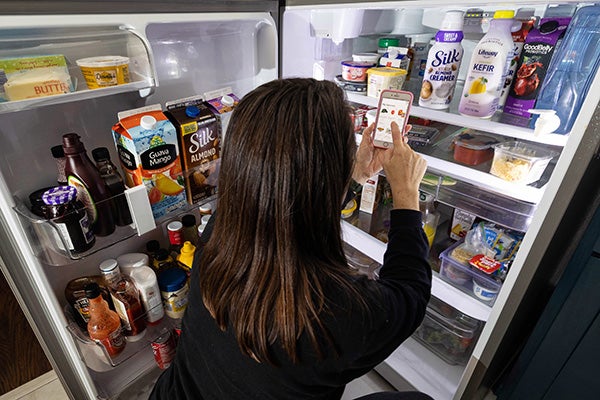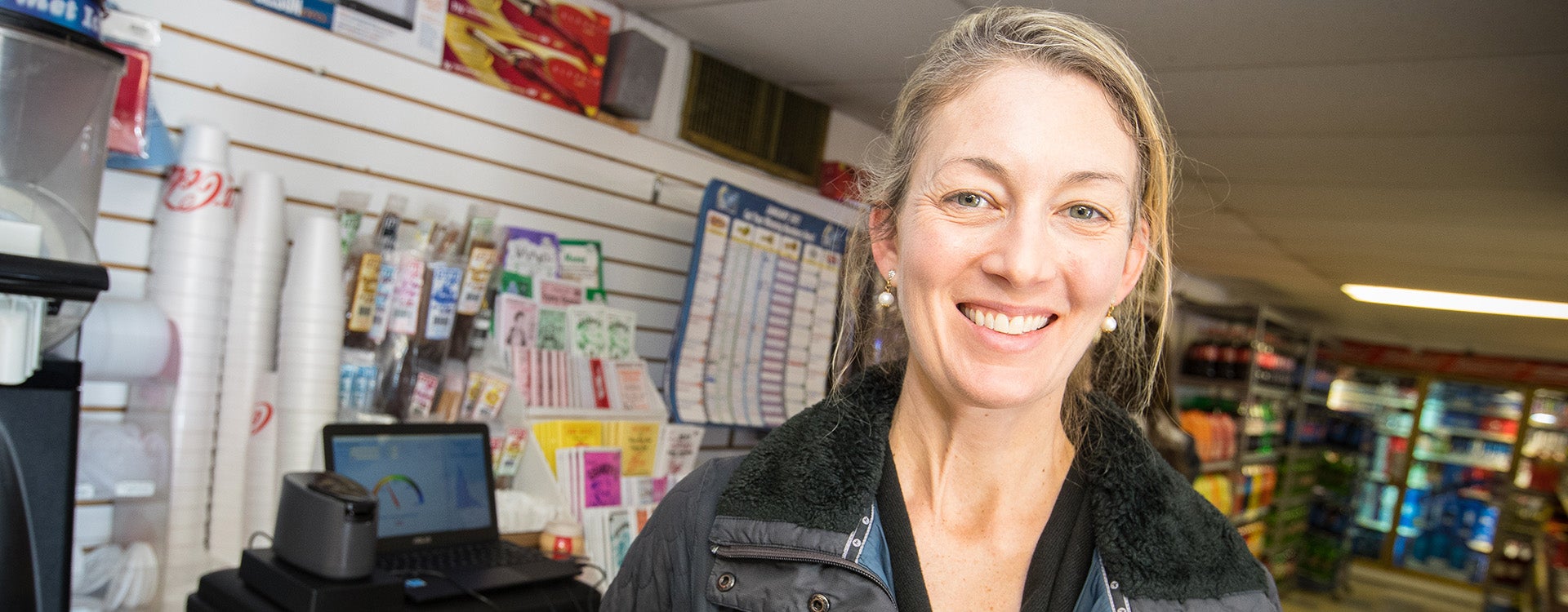Grocery shopping in-store vs. online: 5 Questions with Dr. Stephanie Pitts
If your trip to the grocery store often includes reaching for a candy bar in the checkout line, would you make that same purchase if you switched to grocery shopping online?

A study from East Carolina University health researchers examined how behavior changes when grocery shopping online compared with in-person shopping.
Cutline (Photo by Rhett Butler)
Maybe not, according to a study from a team of researchers from the ECU Brody School of Medicine’s Department of Public Health, along with public health master’s students and collaborators from UNC-Chapel Hill, University of Kentucky and Research Triangle Institute. Their study on the advantages and disadvantages of online grocery shopping for WIC participants hints at how the method used to shop for groceries could impact the types of foods purchased.
Researchers provided gift cards to seven participants from the Special Supplemental Nutrition Program for Women, Infants and Children (WIC), to buy $30 worth of groceries both online and in person, cataloging their purchases and whether each purchase was considered an impulse purchase or a planned purchase.
The study results revealed that participants made impulse purchases in-store that included chips and candy, and sometimes healthier foods such as fruit. Participants found that advantages of online grocery shopping included ease, convenience and saving time. Disadvantages included inadequate substitutions, the online shopping fee, lack of control over selection of perishable goods and inability to find good deals online versus in the store.
We asked ECU Public Health professor and researcher Dr. Stephanie Jilcott Pitts to answer five questions about what their research suggests and where it goes from here.
1. Why did you focus this study on participants of the Special Supplemental Nutrition Program for Women, Infants, and Children (WIC)?
“Our team focused on WIC participants because there are certain WIC-approved foods that they can purchase using WIC benefits and these must meet nutrition-related standards. WIC participants, by definition, are either pregnant and/or have children — thus, we thought they may have some interest in shopping online to avoid taking children into brick-and-mortar supermarkets.”
2. What surprised you the most about your findings?
“One thing that surprised me was that some participants described purchasing fruit as an impulse purchase. Most previous literature has described impulse purchases as unhealthy foods and beverages, such as cookies, candy bars, or sodas you might purchase from the check-out aisle. Another thing that surprised me was that participants reported more impulse shopping online versus in the brick-and-mortar supermarket. We hypothesized there would be more impulse purchases in the brick-and-mortar store.”
3. What does your study suggest about how we shop?
“This was a qualitative study among just a few participants so I hesitate to generalize to overall shopping habits. However, one of the disadvantages of online shopping that participants stated was they could not figure out if they were getting good deals on products, and so this suggests that people really want to feel like they are getting a good deal on the foods and beverages they purchase. People in our study mentioned wanting to ‘check the mark-down cart’ in the brick-and-mortar store. They felt like they could be missing deals like the mark-down cart if they shopped online.”
4. Based on your findings, do you have recommendations on how to use online shopping to save time or money, or to make more nutritious choices?
“Women with children mentioned the benefit of online shopping in that they would not have to take their children into the store with them. They mentioned that this is stressful and there is ‘pester power’ when children ask for unhealthy foods and beverages. So overall, I think that a less stressful shopping experience can help encourage people to purchase healthier items. Shopping online with a list can help caregivers of young children avoid ‘pester power’ and have time and stress-free space to critically evaluate choices to maximize the healthier choices. Other studies suggest there may also be fewer impulse purchases overall online, but we still need to gather more data on this issue.”
5. What’s the next step for this research?
“Designing and implementing a healthy eating intervention for WIC participants was the goal of the research. There are many public health nutrition researchers working on this type of intervention, and it will be interesting to see if shopping online can help people make healthier choices!”

Study researcher Dr. Stephanie Jilcott Pitts said they studied showed drawbacks and benefits to online shopping, including the feeling of a less stressful shopping experience for parents. (Photo by Cliff Hollis)